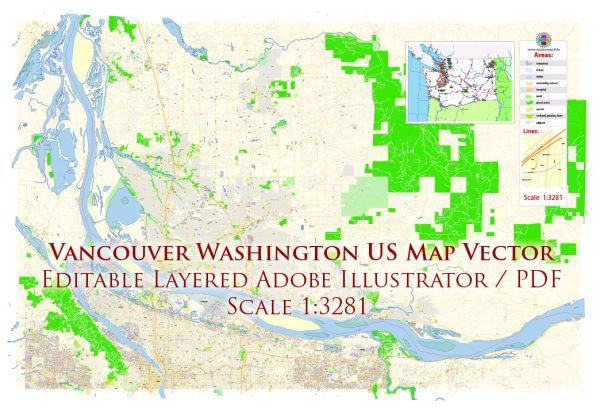Vancouver, Washington, located in the Pacific Northwest of the United States along the Columbia River, has a history of urban development closely tied to its strategic location, natural resources, and economic activities. Here is an overview of key phases in Vancouver’s urban development:
- Indigenous Peoples:
- Before European contact, the Vancouver area was inhabited by Indigenous peoples, including the Chinook and Klickitat tribes, who thrived along the Columbia River.
- Lewis and Clark Expedition (Early 19th Century):
- In 1805-1806, the Lewis and Clark Expedition explored the Pacific Northwest, and the Corps of Discovery camped near the present-day site of Vancouver. This expedition played a role in the later development of the region.
- Hudson’s Bay Company and Fort Vancouver (19th Century):
- In the 1820s, the Hudson’s Bay Company, led by John McLoughlin, established Fort Vancouver as a fur trading post and headquarters. Fort Vancouver became a key center for the fur trade in the Pacific Northwest and a hub for cultural exchange.
- Establishment of the City (19th Century):
- The city of Vancouver was incorporated in 1857. Initially, it served as a key supply depot for settlers moving westward and as a stop along the Oregon Trail.
- The city was named after Captain George Vancouver, a British explorer who had explored the region in the late 18th century.
- Railroads and Industrialization (Late 19th Century):
- The arrival of the railroad in the late 19th century played a pivotal role in Vancouver’s development. The city became a transportation hub, facilitating the movement of goods and people.
- Industrialization, including lumber mills and shipbuilding, contributed to economic growth and the expansion of the city.
- World War I and World War II (20th Century):
- Vancouver experienced economic booms during both World War I and World War II. The Kaiser Shipyards, located in Vancouver, played a crucial role in building Liberty ships for the war effort during World War II.
- The influx of workers during these periods led to population growth and the development of housing and infrastructure.
- Post-War Period and Suburbanization (Mid-20th Century):
- Like many American cities, Vancouver experienced suburbanization in the post-war period. The development of suburban neighborhoods and the construction of highways reflected broader trends in urban development.
- The city continued to evolve as an industrial and commercial center, with a diverse economy including paper mills, aluminum production, and technology.
- Contemporary Urban Development:
- In recent decades, Vancouver has seen efforts to revitalize its downtown area and waterfront. The Columbia River waterfront has been redeveloped with parks, trails, and commercial spaces, enhancing the city’s livability.
- The expansion of educational institutions, such as Washington State University’s Vancouver campus, has contributed to the city’s cultural and intellectual vibrancy.
- High-Tech and Economic Diversification:
- Vancouver has become a part of the greater Portland metropolitan area and has witnessed growth in the high-tech sector. The city’s economy has diversified, with a focus on technology, healthcare, and education.
- Urban Challenges and Planning Efforts:
- Vancouver, like many growing cities, faces challenges related to infrastructure, housing affordability, and transportation. Planning efforts are ongoing to address these issues and shape sustainable urban development.
Vancouver, Washington’s history is characterized by its evolution from a fur trading post to a diverse and economically dynamic city. The legacy of its Indigenous roots, historic significance as a fur trading center, and strategic location along the Columbia River continue to influence its urban development and cultural identity.


 Author: Kirill Shrayber, Ph.D.
Author: Kirill Shrayber, Ph.D.